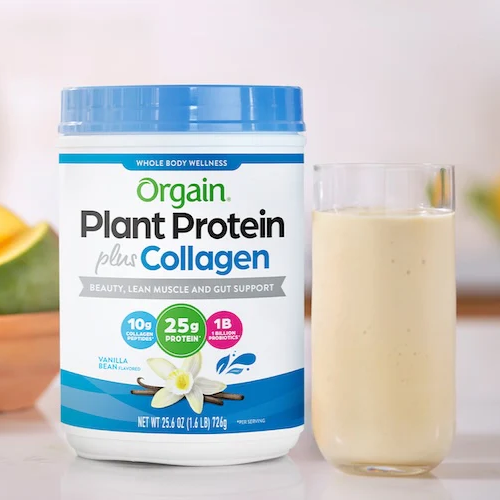Protein Packets vs. Traditional Protein Sources: Which Is Right For You?
In today’s fast-paced world, maintaining a balanced diet rich in essential nutrients—especially protein—can be a challenge. Whether you're an athlete, a busy professional, or simply someone focused on wellness, protein plays a vital role in muscle repair, satiety, and overall health. But with so many options available, it can be difficult to determine the best way to meet your daily protein needs.
Should you rely on quick, convenient protein packets, or stick with traditional whole-food sources like chicken, eggs, and legumes? Each approach offers unique benefits, and the right choice depends on your lifestyle, health goals, and dietary preferences.
This comprehensive guide compares the benefits and drawbacks of protein packets versus traditional protein-rich foods. We’ll explore everything from macronutrients and digestibility to sustainability and cost—helping you make informed decisions about your protein strategy.
No. 1
Understanding Protein Packets and Traditional Protein Sources
What Are Protein Packets?
Protein packets include bars, stick packs, and ready-to-drink (RTD) shakes. These supplements deliver measured doses of protein quickly and with consistent nutrition. Bars often blend protein powder with oats or nuts, adding texture and fiber. Powder sticks mix easily with water or milk in seconds. RTD bottles offer portable protein solutions for travel.
These formats act as a protein synthesis supplement, ideal for busy routines and precise dosing. Athletes and professionals who track macros find packets convenient for post-workout recovery or an on-the-go snack. Many combine whey vs plant protein options to match dietary preferences or address protein powder health concerns. Shelf-stable packets avoid refrigeration and fit in a gym bag or office drawer.
Overview of Traditional Protein Sources
Traditional protein as food covers whole foods like meat, dairy, eggs, and legumes. Animal sources such as chicken, beef, and pork provide complete proteins with all essential amino acids. These cuts often rank high in protein digestibility. Dairy items like milk, yogurt, and cheese supply casein and whey, plus calcium and other nutrients.
Eggs deliver a highly bioavailable protein profile, making them a kitchen staple. Plant sources such as beans, lentils, and peas offer protein nutrition plus fiber, vitamins, and minerals. Varying your choices ensures a balance of amino acids, micronutrients, and natural antioxidants for overall health.
No. 2
Nutritional Profile Comparison
Below is a detailed look at how single-serve protein packets stack up against traditional protein sources in macronutrients, micronutrients, sugar content, sodium, and fiber. Understanding these differences can help you match your protein strategy to your dietary goals and meal planning.
Macronutrient Breakdown
Protein
Protein Packets: 20–30 g protein per serving, formulated as a protein synthesis supplement with high bioavailability.
Chicken Breast (100 g): ~31 g protein, 3.6 g fat, 0 g carbs, a classic protein as food source with no additives.
Cooked Legumes (100 g): ~9 g protein, 0.5 g fat, 20 g carbs, plus fiber, vitamins, and minerals for balanced nutrition.
Carbohydrates & Fiber
Protein Packets: 2–10 g carbs, 0–5 g fiber depending on added oats or flavorings.
Greek Yogurt (170 g): 6–9 g carbs, negligible fiber, offers calcium and probiotics.
Beans (100 g): 20 g carbs, 6 g fiber, supports digestion and satiety with natural plant-based nutrition.
Fats & Sodium
Protein Packets: 1–5 g fat, 100–200 mg sodium; sodium may vary with flavor and additives.
Salmon (100 g): 13 g fat (rich in omega-3 fatty acids), 50 mg sodium, plus vitamin D.
Cottage Cheese (100 g): 4 g fat, 400 mg sodium, delivers calcium and casein protein.
No. 3
Micronutrients and Additives
Protein packets often include added vitamins D and B12, electrolytes, and trace minerals to enhance protein powder health profiles. Many use artificial sweeteners, flavors, and preservatives for shelf stability. These additives can support athletic performance or general protein nutrition but may concern those seeking clean-label products.
Traditional protein as food sources deliver naturally occurring iron, zinc, calcium, and magnesium. Fish and legumes also supply antioxidants. With whole foods, you control sodium, seasoning, and avoid added sugars or colors. This flexibility supports long-term dietary balance and optimal nutrient intake.
Orgain
Fuel your fitness journey with Orgain Protein!
Clean, delicious, and packed with the nutrients you need to crush your goals.
No. 4
Protein Bioavailability and Digestibility
Bioavailability Scores
Protein bioavailability measures how much of consumed amino acids your body can use. The Protein Digestibility Corrected Amino Acid Score (PDCAAS) rates protein quality from 0 to 1. Whey and casein powders rank 1.0, reflecting complete amino acid profiles and high protein digestibility. Soy protein isolate also achieves 1.0, making it a top plant-based powder.
Single-source plant proteins score lower: pea at 0.69, rice at 0.47, hemp at 0.46. Whole foods such as meat and dairy typically range from 0.8 to 1.0, depending on the cut and cooking method. Understanding this helps you choose between protein supplements for athletes and whole-food sources to match your nutrient needs.
Digestibility Factors and Processing
Processing methods like heat treatment and mechanical milling can denature proteins, exposing peptide bonds and improving protein digestibility in supplements. In protein powder health products, refining isolates protein and removes fats or carbohydrates. This process ensures faster gastric breakdown and a quicker supply of amino acids to muscles. However, excessive refinement may strip out beneficial compounds found in intact foods.
In whole foods, cell walls and connective tissues slow digestion, providing a sustained release of nutrients for satiety and gut health. The Digestible Indispensable Amino Acid Score (DIAAS) measures how individual amino acids are absorbed. Whey, casein, and soy isolates often score above 1.0 for DIAAS, outperforming many plant sources. Your choice depends on convenience, nutrient density, and digestive comfort.
No. 5
Convenience, Cost, and Practical Use Cases
Convenience and Portability
Protein packets open in seconds with no blending or cook time required. They are shelf-stable for over a year and often comply with airline carry-on rules, unlike refrigerated meats. Bars and single-serve powders fit neatly in backpacks, gym bags, or office drawers. This portability makes packets ideal for busy days, travel, and last-minute protein boosts.
Cost Analysis
Protein supplements for athletes often carry a premium price. In 2023, Americans spent about $510 per person on protein supplements, which may exceed the cost of bulk whole foods. Cooking lean meats or legumes at home costs less per gram of protein and lets you control sodium, sugar, and additives. Planning meals and buying in bulk can reduce expenses. Reading labels ensures you avoid bars with empty calories.
Ideal Use Cases
On the Go
Packets and protein bars excel for travel, office breaks, and outdoor activities. No utensils or refrigeration are needed, making them a reliable protein boost on the go.
Workout Recovery
Whey powders offer fast-absorbing protein to support muscle recovery after workouts. Their high protein bioavailability delivers amino acids quickly for repair and synthesis.
Meal Replacement and Planning
When you have time for meal prep, whole foods like grilled chicken, eggs, or beans provide sustained energy, fiber, and micronutrients alongside protein. These options work well as meal replacements, ensuring balanced nutrition when time is limited.
No. 6
Health Impacts and Suitability for Different Goals
Weight Management and Satiety
Protein increases satiety and raises the thermic effect of food (TEF), aiding weight management. Whey and casein packets deliver 20–30 g protein which can curb cravings for hours. However, some bars contain added sugars and sodium. Opt for low-sugar powders to stabilize glucose, especially if managing diabetes.
Traditional protein as food sources, such as lean poultry, fish, dairy, and legumes, supply protein plus fiber and natural micronutrients. Cooking at home ensures you control salt, sugar, and healthy fats. Whole foods support long-term dietary balance, making them a reliable choice for sustainable weight management.
Muscle Recovery and Growth
Athletes and active individuals generally aim for 1.4–1.8 g of protein per kilogram of body weight daily. In the debate of whey vs plant protein, whey powders spike amino acids rapidly, while casein offers a slow release that supports muscle protein synthesis overnight. Plant-based proteins, such as soy isolate, can aid recovery and may improve cholesterol levels when used as part of protein supplements for athletes.
Using protein packets as gap fillers after workouts ensures a rapid supply of amino acids, while whole foods add micronutrients and healthy fats to support repair. A balanced strategy combines a protein synthesis supplement for quick gains with chicken, eggs, beans, or fish to provide sustained nutrition and overall protein bioavailability.
Long-Term Health Considerations
Adequate protein intake supports older adults in preserving muscle mass and function, reducing the risk of sarcopenia. While individual protein packets can fill dietary gaps, they may contain hidden sodium and additives that impact blood pressure and cardiovascular health. Those with diabetes or hypertension should choose unflavored or low-sodium formulas.
Relying solely on supplements can create nutrient imbalances. Combining benefits of protein supplements with whole foods ensures you get fiber, antioxidants, and healthy fats. This balanced protein nutrition approach promotes long-term well-being and reduces reliance on processed ingredients.
No. 7
Innovative Trends and Sustainability Considerations
Sustainable Protein Options
Global food production accounts for 25–30 percent of greenhouse gas emissions, driving demand for sustainable nutrition. The plant protein market exceeds $16 billion as consumers seek natural, eco-friendly protein as food and supplements. Insect and algae protein packets deliver high-quality protein using less land and water while minimizing environmental impact.
Insect-Based Packs
Lower land and water requirements than animal farming
Rich in essential amino acids and micronutrients
Algae-Derived Packs
Spirulina and chlorella thrive on marginal land
Supply protein, fiber, and antioxidants with low emissions
Native Whey Protein
Produced from fresh milk without chemical additives
Contains less lactose and fat than standard whey
Emerging Packet Innovations
Collagen peptide sachets use by-products from bovine or fish processing to support joint and skin health while reducing waste. These ethically sourced packets appeal to consumers who value transparency, clean labels, and the benefits of protein supplements. Brands also explore blends of insect, algae, and NWP to optimize nutrition, taste, and sustainability in single-serve packets.
Meal Planning Integration
Blend algae or collagen sachets into smoothies, soups, or yogurt to boost protein nutrition and antioxidants.
Mix insect protein powder into energy bites, dips, or sauces for a sustainable amino acid boost.
Stir native whey protein into pancake batter, oatmeal, or baked goods to support protein synthesis and enhance texture.
Takeaways
Choosing the right protein strategy involves balancing convenience, nutrition, cost, and long-term health. Protein packets excel when you need a quick, measured dose of high-quality protein powder that supports muscle repair and recovery. Traditional protein as food sources deliver natural nutrients, fiber, and flavor that support overall well-being. Your ideal approach depends on your lifestyle, dietary goals, and budget.
Key Takeaways:
Protein content and quality: Whey and casein packets rank high on PDCAAS and DIAAS for protein bioavailability, while whole foods like meat, eggs, and legumes offer diverse micronutrients.
Digestibility and additives: Packets blend quickly and may include sweeteners or preservatives; whole foods provide fiber and natural nutrients without added ingredients.
Convenience and cost: Single-serve protein supplements for athletes and busy individuals shine on the go, but cooking lean meats and legumes often costs less per gram of protein.
Health goals and sustainability: Use packets for post-workout recovery, travel, or when quick nutrition is needed. Lean on whole foods for satiety, weight management, and eco-friendly protein nutrition.
Whether you stock up on portable packets or plan meals around chicken, beans, and eggs, use these insights to craft a protein plan that fits your needs and values. Understanding what is protein in food and the benefits of protein supplements helps you make informed choices and maintain a balanced diet.
Looking for Wellness resources?
Are you looking to enhance your wellness routine? Explore our wellness partners who offer a wide range of resources to support your journey toward holistic living and well-being.































